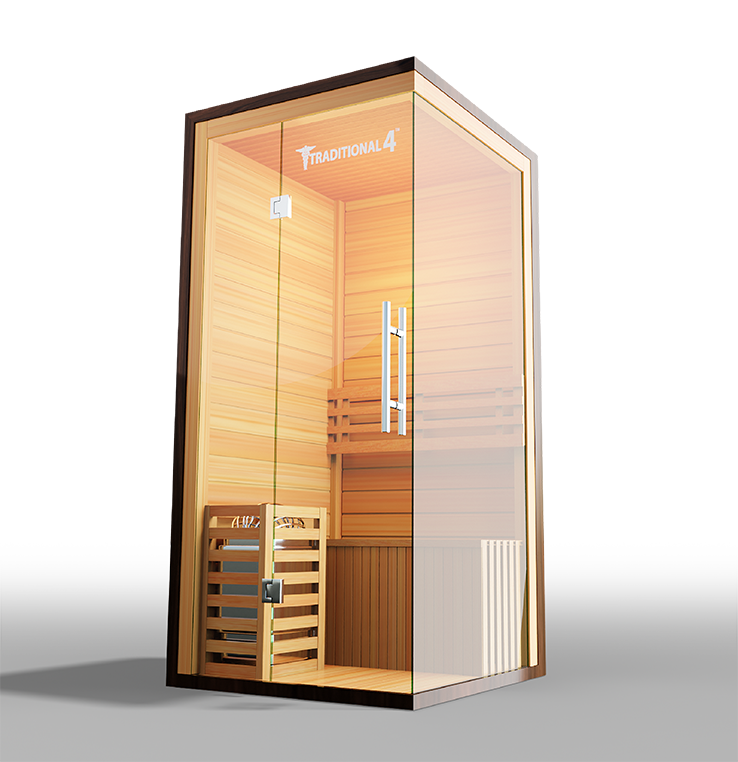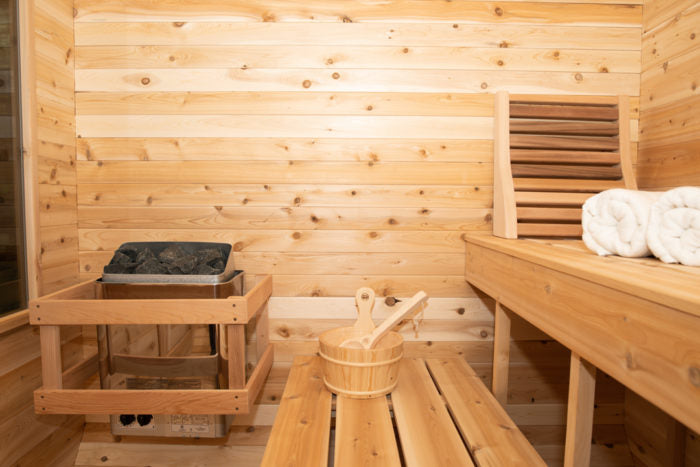Traditional Sauna Can Be Fun For Anyone
Table of ContentsTraditional Sauna Fundamentals Explained8 Simple Techniques For Traditional SaunaTraditional Sauna Things To Know Before You BuyWhat Does Traditional Sauna Do?
Many of the weight shed in a sauna is water loss and is re-gained upon rehydrating. Without an uncertainty sauna can be a crucial part of a healthy weight loss program. To take a look at the differences between typical and IR saunas, I will certainly separate these into verifiable, academic, and produced distinctions.Thus, the most popular point in the saunawhich is at the ceiling directly over the sauna heateris typically between 185 and 190 F. Traditional Sauna. Claims that a traditional sauna goes beyond 200 F is just not true and not applicable for electrical saunas marketed in the US. The temperature level for a far-infrared sauna is generally established between 120 and 140 F; however, unlike the traditional sauna, the goal in and IR space is not to achieve a high temperature
Due to the fact that of this, the temperature level distinction is nearly unimportant, since excessive sweating results in both sauna kinds, but the approach of heating up the body is various. In an IR sauna the bather will feel warm and will certainly sweat a lot, but at a lot reduced temperatures. Hence, if the goal is to invest longer periods of time in the sauna, the IR sauna is a good selection.

Examine This Report on Traditional Sauna
When the heat is achieved, the elements cycle on and off to maintain the high temperature level. Many conventional sauna users appreciate pouring water over the rocks to develop steam to raise sauna humidity levels. The advantages of putting water over the rocks consist of: making the space a lot more comfy, moistening the nasal passages, and allowing the use of aromatherapy by mixing vital oils with the water.
In a far-infrared sauna, the warm front penetrate the body to effectively heat the body and raise the body core temperature level. To attain this raised temperature level, Far-infrared emitters develop infrared power which is close More hints to the exact same wavelength as that which the body naturally emitsoften referred to as the "Vital Range" of 7 to 14 microns), so the power is well obtained by the body.
When the power goes into the body, it causes the body temperature to raise and inevitably leads to sweating. In an infrared sauna it is very important for the emitters/heaters to remain on almost frequently. Given that there is no mass of rocks to maintain warm, the sauna will cool down if the emitters closed off.
As pointed out above, the sauna bather in an infrared area intends to position himself before operating emitters to get optimal benefit from the warm. The heating time for the 2 Continued spaces can be very various, depending upon how the areas are utilized. For a conventional sauna, a bather should permit 30-40 minutes for the area to achieve a desired temperature and to properly pre-heat the rocks.
The Greatest Guide To Traditional Sauna
A well constructed sauna will normally attain a temperature of 150-160 F in about 30-40 minutes. For hotter temperature levels, the area might need to heat for a longer period.
To some, 15 minutes was "lost" Resources while the infrared energy warmed the wood panels instead of heating a body, while others locate a pre-heated space to be more comfortable and think an elevated starting temperature is needed to start perspiring. The length of suggested use for every space is around the very same (10-15 mins per session); nonetheless, as a result of the reduced air temperature levels and the capacity to really feel the results of infrared warm quicker than a typical sauna, it is not unusual for an individual to spend an overall of 20-30 mins in an infrared sauna.
Standard saunas have a tendency to be larger (for this reason utilize even more power) than infrared saunas, although traditional saunas are certainly available in one and 2 individual sizes also. For a two-person standard sauna, 5x6 or 5x7 size is most preferred. The leading bench can easily seat 2 or three people and is additionally long sufficient to lie down throughout the sauna session.


The typical price per kWH of electrical energy in the U.S. is roughly $0.11, so a 4.5 kW heating unit will cost around $.50 to run for one hour, if the heating unit runs continuously for one hour. Normally a sauna heater will certainly compete 75% of the first hour and 50% of subsequent hours on since the aspects cycle once the established temperature is accomplished.
Traditional Sauna - The Facts
A two individual far-infrared room is typically physically smaller sized than a traditional sauna, typically concerning 4' x 4' or smaller sized. The IR heating unit is normally 1.5-1.7 kW making use of a 120 volt 15 amp plug-in service. Since the space can be utilized quicker than a sauna room, we will assume the room is used for to of an hour including warm up time.
Finally, there is a seldom talked about difference in the social experience in between both areas. While our culture has actually shed several of the social benefit of the standard sauna experience, it can be extremely socially satisfying. From household time in the sauna, to heart-felt conversations with better halves, to sauna partiesthe conventional sauna experience can lead to intimate socializing.
Most greater end infrared spaces include tinted light treatment, sound systems and full-glass fronts.